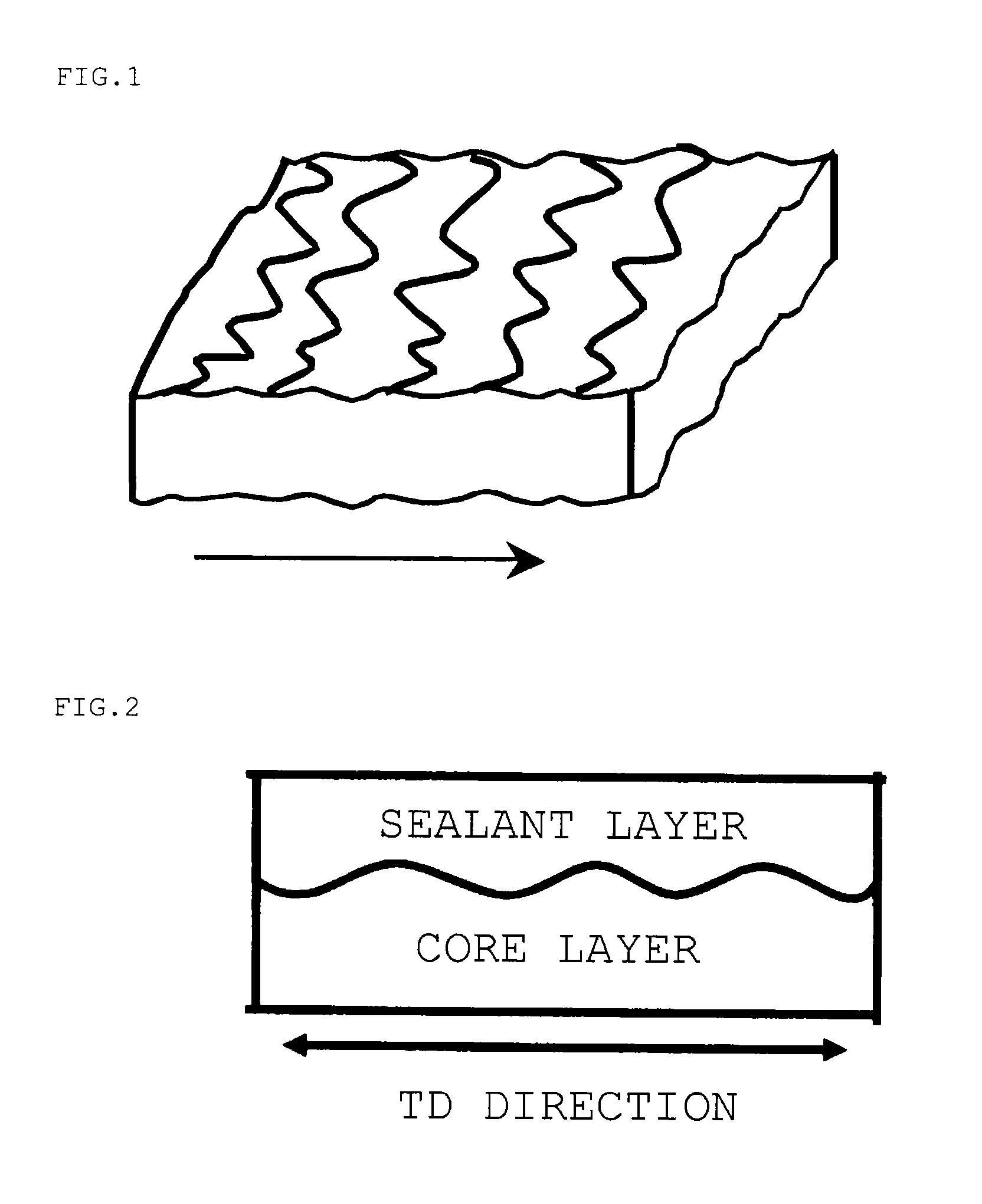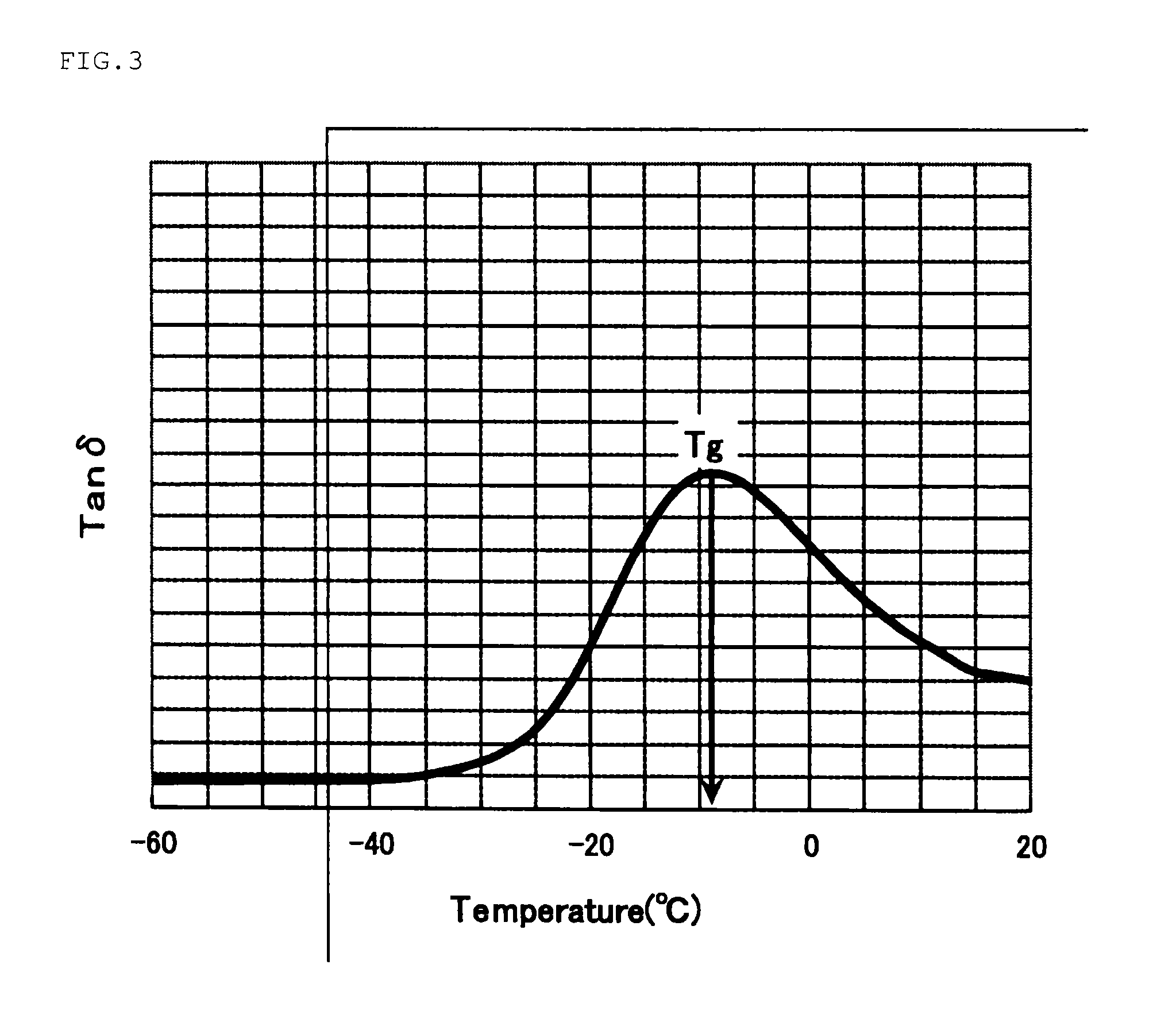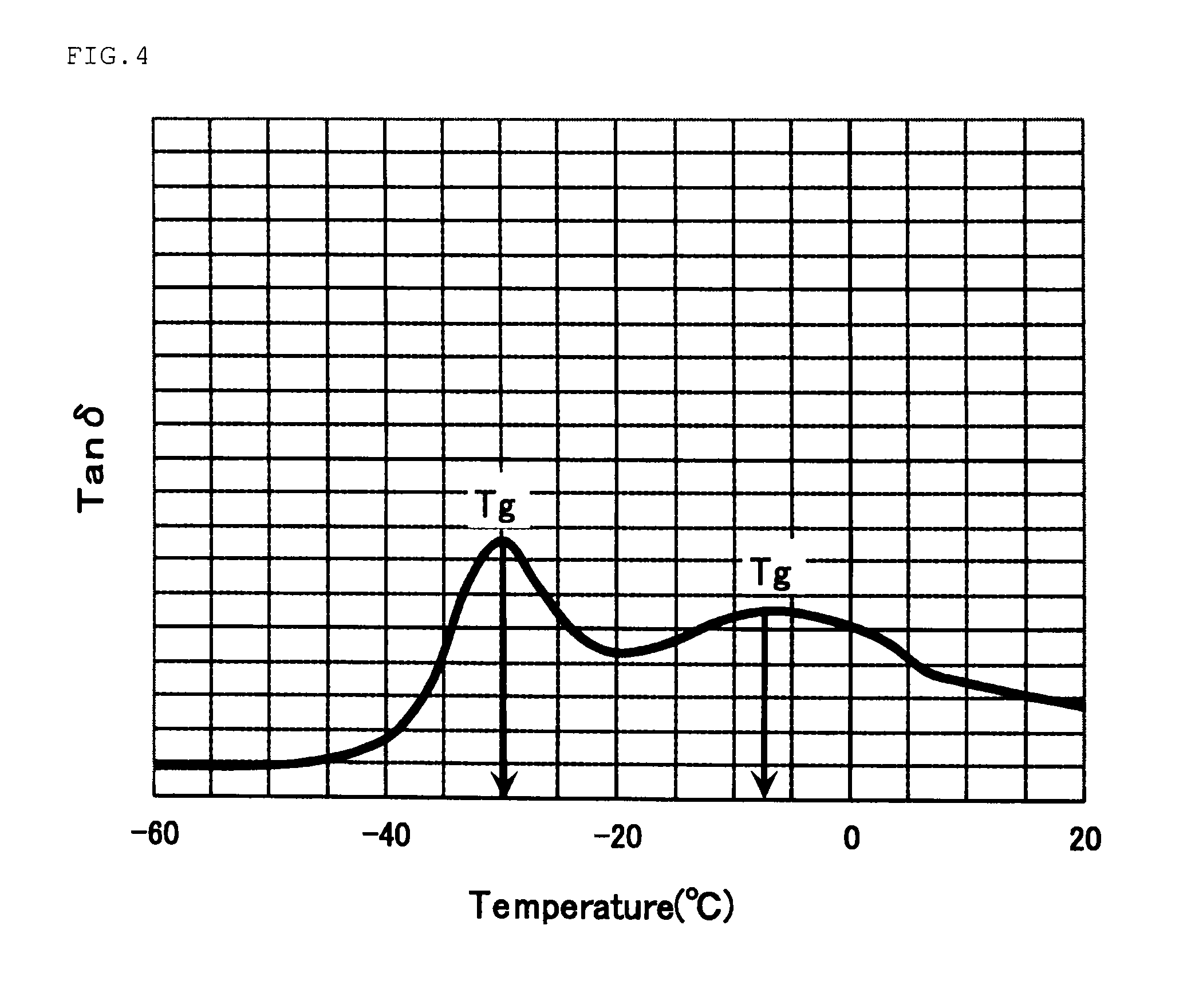Propylene-ethylene copolymer resin composition and moulded article, film and sheet thereof
a technology of propylene-ethylene and resin, which is applied in the direction of synthetic resin layered products, packaging, domestic packaging, etc., can solve the problems of increasing the neck-in of the film when taken up onto the roll from the die, affecting the production efficiency of the product, so as to improve the extrusion property of propylene (co)polymers, suppress the production of surface roughness, and improve the effect of productivity and performan
- Summary
- Abstract
- Description
- Claims
- Application Information
AI Technical Summary
Benefits of technology
Problems solved by technology
Method used
Image
Examples
examples
[0450]The present invention is hereinafter specifically described by way of Examples which do not limit the present invention. Evaluation methods and resins used in Examples and Comparative Examples are as follows:
1. Propylene Polymer (A)
(1) Measurement Methods of Properties of Polymer (A)
[0451](1-1) Ethylene Content E(A).
[0452]The ethylene content E(A) is a value determined by analyzing 13C-NMR spectra by complete proton decoupling under the following conditions:
[0453]Instrument: “GSX-400” from JEOL Ltd. or an equivalent instrument (carbon nuclear resonance frequency: 100 MHz or more)
[0454]Solvent: o-dichlorobenzene+deuterated benzene (4:1 (volume ratio))
[0455]Concentration: 100 mg / mL
[0456]Temperature: 130° C.
[0457]Pulse angle: 90°
[0458]Pulse interval: 15 seconds
[0459]Integration times: 5,000 or more.
[0460]Designation of spectra may be carried out by referring to Macromolecules 17, 1950 (1984), for example. Designation of spectra measured under the above conditions is shown in the ...
production example a-1
Preparation of Catalyst for Preliminary Polymerization
[0491](Chemical Treatment of Silicate Salt)
[0492]To a 10-L glass separable flask equipped with a stirring blade were gradually added 3.75 liter of distilled water and then 2.5 kg of concentrated sulphuric acid (96%). At 50° C., 1 kg of montmorillonite (“Benclay SL” from Mizusawa Industrial Chemicals, Ltd., average particle diameter=25 μm, particle size distribution=10 to 60 μm) was further dispersed and the dispersion was heated to 90° C. which temperature was maintained for 6.5 hours. After cooling to 50° C., the slurry was filtered under reduced pressure to recover a cake. To the cake were added 7 liters of distilled water to again obtain slurry which was then filtered. This washing procedure was repeated until the washing fluid (filtrate) had pH of above 3.5. The recovered cake was dried overnight at 110° C. under a nitrogen atmosphere. The weight of the cake after drying was 707 g.
[0493](Drying of Silicate Salt)
[0494]The chem...
production example a-6
[0513]Propylene-ethylene random copolymerization was carried out in the same manner as Production Example A-1 except that the preliminarily polymerized catalyst B was used which was prepared with [(r)-dichloro[1,1′-dimethylsilylenebis{2-methyl-4-(4-chlorophenyl)-4H-azulenyl}]hafnium] instead of [(r)-dichloro[1,1′-dimethylsilylenebis{2-methyl-4-(4-chlorophenyl)-4H-azulenyl}]zirconium] and that the polymerization conditions indicated in Table 3 were used.
[0514]The analysis results of the obtained PP(A-1) to PP(A-9) are shown in Table 3.
[0515]
TABLE 3Production ExampleA-1A-2A-3A-4A-5A-6A-7A-8A-9PreliminarilyType—AAAAABAAApolymerizedAmountg0.2210.30.10.20.20.10.1catalyst(excludingpolymer)PolymerizationHydrogenNL41.522.761.81.55.87.2conditionsamountEthyleneg19000400100027002500190019001900amountPolymerization° C.607070656060606060temperaturePolymerizationPolymer yieldkg20161416.812.8141611.813resultsCatalystkg-PP / 100814561287080118130activityg-catalystPolymerEthylenewt %3.200.581.7543.23....
PUM
| Property | Measurement | Unit |
|---|---|---|
| heat seal temperature | aaaaa | aaaaa |
| heat seal temperature | aaaaa | aaaaa |
| molecular weight distribution | aaaaa | aaaaa |
Abstract
Description
Claims
Application Information
 Login to View More
Login to View More - R&D
- Intellectual Property
- Life Sciences
- Materials
- Tech Scout
- Unparalleled Data Quality
- Higher Quality Content
- 60% Fewer Hallucinations
Browse by: Latest US Patents, China's latest patents, Technical Efficacy Thesaurus, Application Domain, Technology Topic, Popular Technical Reports.
© 2025 PatSnap. All rights reserved.Legal|Privacy policy|Modern Slavery Act Transparency Statement|Sitemap|About US| Contact US: help@patsnap.com



